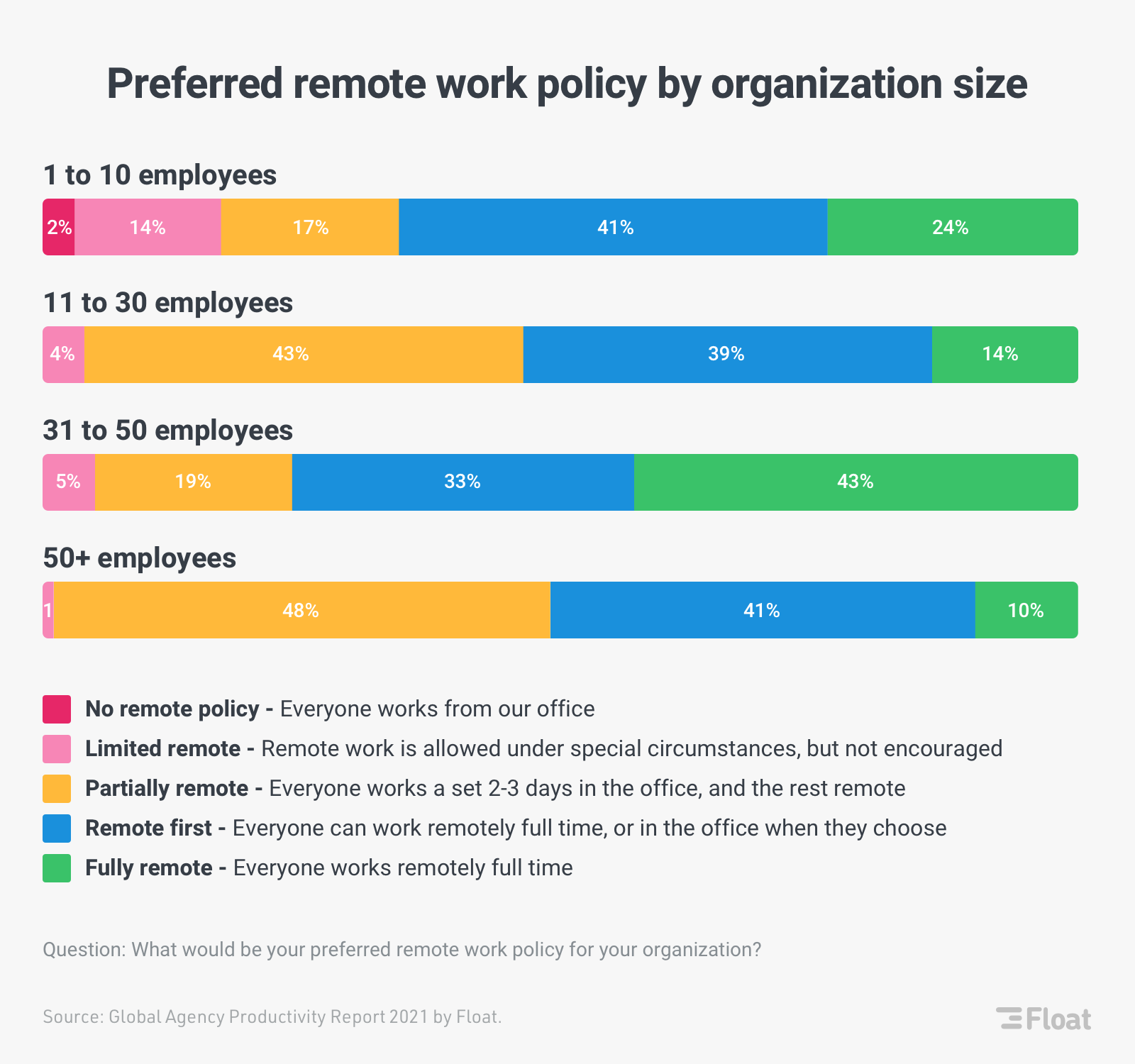When the COVID-19 pandemic first swept the globe in early 2020, there was widespread fear and apprehension as to how it could fundamentally change the way we live. For many, it has been the disaster that they forecasted. Yet, the pandemic also brought a seismic shift in how we see the world of work — and maybe even for the better.
While the enforced lockdowns took their toll, they opened the eyes of many professionals to the benefits of working from home. Remote work, which now seems commonplace, was initially seen as an exciting new way to earn a living without stepping outside the house. Nothing is perfect, though, and over time many professionals have developed a more nuanced view of the pros and cons of remote work based on various factors.
One of the main upsides to remote work for many has been saving both money and time. When you work from home, you can cut costs on your daily commute and recoup all that time spent in transit to and from your workplace. Yet the commute isn’t the only factor influencing the money you make working remotely.
In this article, we’re going to focus on the digital marketing industry, and specifically, the difference in salaries between those who work remotely versus those who remain in the office.
Methodology
To present an accurate picture of marketing salaries both for those working in the office and those working remotely, we scraped data from leading authorities to calculate the median salary for different jobs in the marketing industry.
From this data, we worked out the percentage difference, which represents one of the most important figures for this guide since it tells us if the way marketers work affects their level of compensation.
What is the average marketing salary?
In the US, the average marketing salary for four of the most common marketing jobs in 2022 is as follows:
- Marketing assistant salary: $109,865
- Marketing director salary: $224,575
- Marketing executive salary: $181,741
- Marketing manager salary: $187,081
These average salaries are accurate for office-based marketers.
What is an entry-level marketing salary?
The national average entry-level marketing salary in the US in 2022 is around $42,920 per year.
Do remote marketers get higher salaries?
Now for the interesting conclusions we can draw from the data we gathered: Across the marketing jobs we analyzed in 2022, remote marketers earned higher salaries in three out of four of the roles.
Here’s a comparison table showing the 2022 average marketing salaries in the office versus remote-based working, and the percentage difference between them:
|
Average office-based salary |
Average remote salary |
Percentage difference |
|
|
Marketing assistant |
$109,865 |
$137,752 |
25.38% |
|
Marketing director |
$224,575 |
$183,153 |
18.44% |
|
Marketing executive |
$181,468 |
$181,741 |
0.15% |
|
Marketing manager |
$187,081 |
$201,072 |
7.48% |
As you can see, there’s only one role in which the office-based professional earns more than their remote-based counterparts, and that’s the marketing director. Aside from this discrepancy, all the data points to higher earnings for those occupying marketing management and entry-level roles remotely.
The most significant difference is for the marketing assistant, who earns on average 25.38% more working remotely than in the office.
Do remote workers get higher salaries in other industries?
Given that remote-based workers earn between 0.15 and 25.38% more than their office-based counterparts, it’s reasonable to assume that we may see a similar trend in other professions and industries.
Consulting the data, the truth is that, yes, remote workers do earn higher salaries in other industries, too.
Here’s a selection of five professions and their average office-based and remote-based salaries in 2022:
|
Average office-based salary |
Average remote salary |
Percentage difference |
|
|
Consultant |
$155,398 |
$184,480 |
18.71% |
|
Operations manager |
$144,794 |
$196,903 |
35.99% |
|
Sales |
$105,823 |
$143,319 |
35.43% |
|
Software developer |
$160,473 |
$178,376 |
11.16% |
|
Technician |
$63,140 |
$95,622 |
51.44% |
Each of these professions, which span different industries, shows an increase in salary for those working remotely in the range of 11-35%.
That isn’t to say this is the case for all professions, though. Recruitment consultants, for example, earn on average 16.05% less while working remotely, while remote financial analysts earn on average 13.68% less.
However, the data overwhelmingly supports the claim that remote workers generally earn higher salaries.
The following data shows the average office-based and remote-based salary across the 67 professions we analyzed:
- Office-based average salary - $149,825
- Remote-based average salary - $161,922
Overall, there’s an average difference of $12,097 between office-based salaries and remote-based salaries. This indicates that on average, remote workers earn 13.58% more than their office-based counterparts in 2022.
Do marketers work more remotely in 2022?
While data is still surfacing on the work landscape in 2022 and how it might have skewed even further towards remote work, here’s what we know about marketing agency trends in 2021:

This chart from Float paints a clear picture of the landscape in 2021, with both small, medium, and large agencies all prioritizing remote work.
Around 82% of small agencies with fewer than ten employees allow partial or fully remote working, while for large agencies with more than 50 employees, this figure increases to a staggering 99%.
The conclusion we can draw from this is that very few agencies are sticking with office-based working as the primary way of working. Most agencies have adopted a hybrid approach that allows employees to come and go, working some of the time in the office and the rest at home.
Why could most remote marketers get paid more?
There are three potential contributing factors to why remote marketers earn more than office-based marketers.
Fewer expenses
The first and most obvious factor is that a company could stand to save money when its employees work remotely. One of the most costly overheads for many businesses is the office unit, the individual desks and work computers supplied, and utility bills for the space.
When there’s less or no need for this office space, the company can afford to pay its employees more.
Talent retention
Another likely reason remote marketers get paid more is that companies are increasingly desperate to retain top talent. To do so in the modern climate, you need to offer a higher salary.
The pandemic opened many people’s eyes to the possibility of working from home and avoiding the dreaded commute to and from the office. As such, there has been a shift in power into the employees’ hands. Now, if their employer doesn’t pay well or provide remote work accommodations, they can find another company based anywhere in the world with a higher salary.
Home office costs
Working from home may save you money, but it can also incur additional expenses. Not every employee can afford to create a space in their home where they can work productively. A home office doesn’t come cheap, so if a company wants its remote-based employees to thrive, a higher pay packet should be given to cover extra costs, including utility bills.
Has COVID-19 changed salaries in marketing?
There should be no doubt that COVID-19 has dramatically impacted the work landscape, causing a seismic shift in marketing salaries. There’s evidence to suggest that companies are offering higher salaries for the return to work than pre-pandemic levels to entice top talent who may be holding out for the best remote marketing jobs.
Not only is there a struggle to attract new talent, but it is also becoming increasingly common for marketing agencies to offer pay raises to existing senior employees to hold onto them.
The allure of remote work has created a fluid job market in which anyone could leave their job if they don’t feel they are being well-compensated.
Has remote working changed the marketing industry?
Without a doubt, the rise of remote work has brought about big changes to the marketing industry.
As you’ve seen, there has been a trend in marketing toward partial or full remote work across agencies of all sizes and salaries have also increased across the board — especially for marketers that work remotely.
There’s now an employee-focused marketplace in the marketing industry and beyond, which places the power firmly in the hands of the talent seeking work.
How does Wrike support remote workers?
With agencies hurtling towards remote and hybrid models as the primary ways of working, it’s wise to adopt remote work tools to support this transition. If you want to uphold productivity levels across the board and keep communication lines strong even from afar, you need a digital system to lean on.
Wrike is a team collaboration platform that helps remote teams overcome the most common challenges with marketing project management at a distance.
Team dashboards allow each member to check in on project progress and team leaders to assess performance across various metrics. Custom workflows enable different teams to work how they want to and simplify their processes through automation. Dynamic reports give marketing teams access to all the information they need in a matter of seconds.
To keep up with the rapidly-changing market, you must acknowledge that remote work will play a huge role in the marketing industry in the years to come. Those working remotely will earn more on average, so to hire the best talent and retain senior employees, offering a higher salary is no longer just an option but an obligation.





